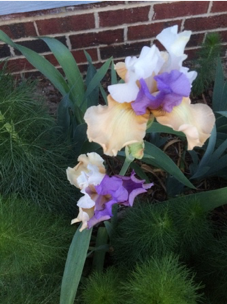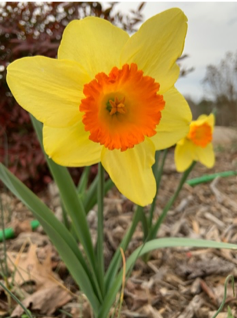Spring Bulbs to the Rescue
go.ncsu.edu/readext?738234
en Español / em Português
El inglés es el idioma de control de esta página. En la medida en que haya algún conflicto entre la traducción al inglés y la traducción, el inglés prevalece.
Al hacer clic en el enlace de traducción se activa un servicio de traducción gratuito para convertir la página al español. Al igual que con cualquier traducción por Internet, la conversión no es sensible al contexto y puede que no traduzca el texto en su significado original. NC State Extension no garantiza la exactitud del texto traducido. Por favor, tenga en cuenta que algunas aplicaciones y/o servicios pueden no funcionar como se espera cuando se traducen.
Português
Inglês é o idioma de controle desta página. Na medida que haja algum conflito entre o texto original em Inglês e a tradução, o Inglês prevalece.
Ao clicar no link de tradução, um serviço gratuito de tradução será ativado para converter a página para o Português. Como em qualquer tradução pela internet, a conversão não é sensivel ao contexto e pode não ocorrer a tradução para o significado orginal. O serviço de Extensão da Carolina do Norte (NC State Extension) não garante a exatidão do texto traduzido. Por favor, observe que algumas funções ou serviços podem não funcionar como esperado após a tradução.
English
English is the controlling language of this page. To the extent there is any conflict between the English text and the translation, English controls.
Clicking on the translation link activates a free translation service to convert the page to Spanish. As with any Internet translation, the conversion is not context-sensitive and may not translate the text to its original meaning. NC State Extension does not guarantee the accuracy of the translated text. Please note that some applications and/or services may not function as expected when translated.
Collapse ▲It’s been a hot, trying summer and the cooler fall temperatures have many of us looking forward to getting outside to work off some tension. Sure there are the clean-up chores from the summer vegetable garden, and the anticipation of fall harvests, but one of the most enjoyable garden activities is dreaming up beautiful splashes and swaths of spring color. Grab your garden clogs, catalogs, and sketch pad!
Beginning about the Thanksgiving holidays, we’ll be planting our bulb orders, and that is not that far away. Are you ready to try something new? For a successful, rewarding experience in the garden KNOW BEFORE YOU GROW.
Spring bulbs are planted in fall, spend winter in the ground, and flower in spring.

Irises, Spring Bulbs
Some of the more common spring bulbs are tulips, irises, daffodils, hyacinth, allium, and crocus. A cold period is necessary for a process called vernalization.
Vernalization is a cold period required by the plant in order to flower. If they don’t receive this cold period, the response that triggers flowering won’t occur and flower buds won’t be made, so these bulbs need several weeks of cold temperatures to break their dormancy and flower to their full potential.
Most fall-planted bulbs will come up and bloom the spring after they are planted. Some will come up and bloom once, some for three or four years before dying out, while others will persist and multiply for many years. A joy-filled garden will reflect your personality, be it a formal garden, or meadow style drifts, under trees, or mindfully planted throughout beds and borders. Some bulbs will multiply enough overtime to naturalize an area, so plan carefully. If your site provides the bulbs with good drainage and sunlight, your spring garden will be filled with rewards.
The bright yellow of Daffodils shout “Happy Spring” to me, and they come in such

Spring Bulbs
a variety of colors and sizes. Plus the deer leave them alone! The larger, showier varieties of tulips don’t perennialize here, but the smaller, two-toned, delicate looking Lady tulip (Tulipa clusiana), is tougher than she looks, will spread by underground stems and bulb offsets, and is highly drought tolerant.
If you buy bulbs this fall, but don’t have a chance to get them into the ground before it freezes, you can store them in your refrigerator to give them the vernalization period that they need, but take care to ensure that they don’t dry out or stay too wet and become moldy.
To find out more regarding the best performers and their bloom times, take a look at the research trials conducted by the NC Agricultural Research Service at Spring-Flowering Bulbs: Trials in North Carolina.
Minda Daughtry is the Horticulture Agent for North Carolina Cooperative Extension in Lee County.




